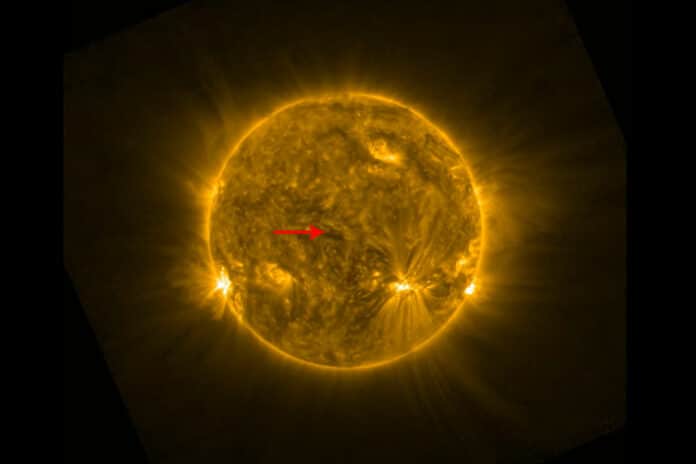New observations made by Solar Orbiter on 5 September 2022 reveal a solar snake snaking its way through the Sun’s magnetic field. The orbiter spotted a ‘tube’ of cooler atmospheric gases moving like a snake in long curves. It is a tube of cool plasma suspended by magnetic fields in the hotter surrounding plasma of the Sun’s atmosphere.
The discovery adds an exciting new feature to the Solar Orbiter mission’s zoo of parts, especially given that the snake was a precursor to a far more violent eruption.
The magnetic field of the Sun has an exceptionally long filament that extends from one side of the Sun to the other, which the plasma in the snake follows.
David Long, Mullard Space Science Laboratory (UCL), UK, said, “You’re getting plasma flowing from one side to the other, but the magnetic field is twisted. So you’re getting this change in direction because we’re looking down on a twisted structure.”
Images from the Solar Orbiter’s Extreme Ultraviolet Imager were used to create the time-lapse movie. Considering the lengths involved in crossing the solar surface, the snake’s actual transit time was about three hours. Still, given the distances involved, the plasma must have been moving at about 170 kilometers per second.
The snake’s origins in an active solar zone that subsequently exploded and ejected billions of tonnes of plasma into space are what make it so fascinating. This suggests that the snake may have been a forerunner to this occurrence; Solar Orbiter captured it all using a variety of instruments.
For the spacecraft’s Energetic Particle Detector (EPD), the eruption was one of the most intense solar energetic particle events detected so far by the instrument.
David said, “It’s a nice combination of datasets we only get from Solar Orbiter.”
More intriguing still is that the plasma from this eruption, known as a coronal mass ejection, swept over NASA’s Parker Solar Probe, allowing its instruments to measure the contents of the eruption.
